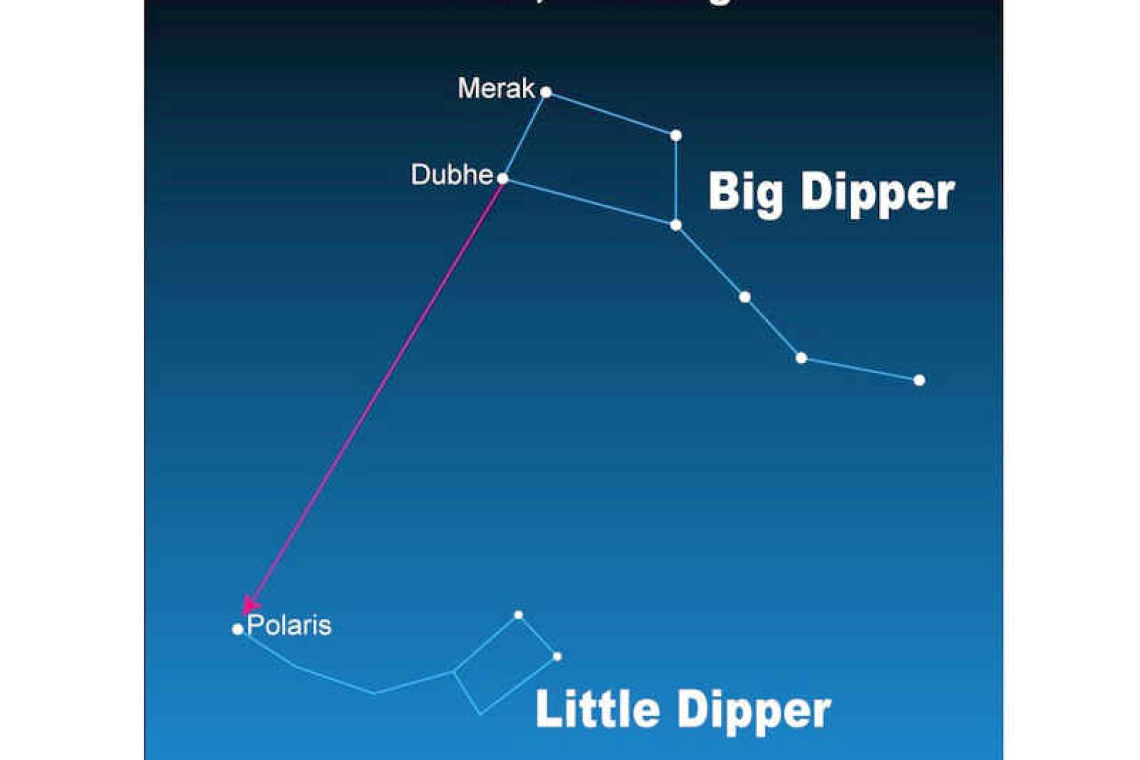~ St. Maarten’s Backyard Astronomy for March 24-26 ~
Sun rises at 6:12am
Sun sets at 6:24pm
Lunar phase: 1st Quarter, Waxing Crescent
Moon rises at 8:57am
Moon sets at 10:22pm
This weekend, we will be gazing north at the two dippers – the Big Dipper and the Little Dipper. These are fairly easy star patterns to learn to recognize and they are traditionally very important to use for navigation and even telling time. In fact, our modern analogue clock, the circle with the hands that travel around, originated as a model of the Little Dipper going around the North Star, Polaris. As the Earth spins, the Big Dipper and Little Dipper can be observed rotating around Polaris in a way that is similar to the hour hand of the clock. Keep in mind, of course, that in the sky, the dippers take 24 hours to circle around Polaris, whereas most of our clocks will cut that time in half and go around twice in the same amount of time.
To locate these star patterns in Earth’s night sky, look north and very low on the horizon. It’s visible to us here in St. Maarten; but if you have tall buildings or trees blocking your view north, it might be a challenge. We are so far south that it isn’t that easy to find the North Star. If you were even farther south – say in the “ABC islands” or Trinidad – you would find it even lower to the horizon. Also, it is helpful to have a clear night with only scattered clouds.
Did you know that Polaris’ altitude in degrees will tell you your latitude on the planet earth? It’s true! Our island is at 18 degrees north and – if you measure the observed height of Polaris – it will be 18 degrees above horizontal. At Trinidad, where the latitude is 10 degrees north, you would find Polaris only 10 degrees above horizontal. You can make a measurement tool with just a school-style protractor, a straw, a string, a weight and a little tape – check the illustration provided. The string with the weight on the end will pull down to earth, giving you a true vertical line. Then look through the straw at a star – in this case Polaris – press the string against the protractor with you thumb and then bring it down and check the measurement.
The string should be at the number that is the altitude of the star, in degrees. Ninety degrees would be directly overhead (where you would find Polaris if you were standing on the North Pole). True horizontal measures zero altitude. By the way, Polaris is the only star that doesn’t move through the night – it remains fixed, because it is directly above the North Pole and the apparent movement of the stars across the sky (and the sun, moon and planets) is all due to the spinning planet from which we make our observations.
Thank you for keeping up with the Night Sky articles, backyard astronomy designed for St. Maarten sky viewing. FYI: If you are out later on in the week, note that each star rises about four minutes earlier each day than written here, and the moon rises 50 minutes later. Night Sky is researched and compiled by Lisa Davis-Burnett. Earthsky.org is a key resource for information and images. Questions or comments? Email This email address is being protected from spambots. You need JavaScript enabled to view it..







